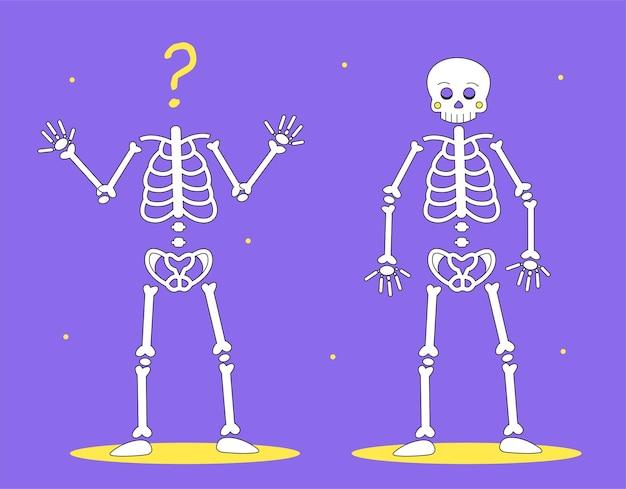Charles Dickens’ timeless novel, Great Expectations, has captivated readers since its publication in 1861, and its themes continue to resonate in the modern world. Among the many themes explored in this literary masterpiece, the importance of social class looms large. In this blog post, we will delve into the intricate relationship between social class and the characters’ lives, choices, and aspirations in Great Expectations.
Set against the backdrop of Victorian England, where social hierarchy was deeply entrenched, Great Expectations follows the journey of Pip, the young protagonist, as he navigates the complexities of society’s expectations and his own aspirations. From Pip’s humble beginnings as an orphaned blacksmith’s apprentice to his encounters with the upper echelons of society, we witness the profound impact of social class on his life.
Through Pip’s experiences, Dickens skillfully explores the stark divisions between the different social classes of the time. As Pip rises in status, aspiring to become a gentleman, tensions arise between his newfound social position and his relationships with characters from different social backgrounds. Great Expectations offers an incisive commentary on the inequalities and prejudices entrenched within the class structure of Victorian society.
Join us as we dive into the world of Great Expectations and analyze the various roles social class plays in shaping the lives of its characters. From the symbolism of clocks to the significance of Estella, we’ll uncover the layers of meaning beneath Dickens’ masterful storytelling. So, grab a cup of tea and immerse yourself in the captivating world of Great Expectations as we embark on this exploration together.
Stay tuned for our upcoming blog posts where we will delve further into the intriguing questions surrounding Pip’s social class, the relationship between Pip and Estella, and the mysteries that unfold within the pages of this literary gem.

The Complex Dynamics of Social Class in Great Expectations
In Great Expectations, Charles Dickens masterfully weaves a tale of love, ambition, and social class, highlighting the stark divisions and inequalities that prevailed in Victorian society. Through the vivid portrayal of characters and their interactions, Dickens exposes the complex role that social class plays in shaping individuals’ lives and their aspirations. Let’s delve deeper into the multifaceted dynamics of social class within this literary masterpiece.
How Social Class Segregates Society
The Elite’s Ivory Tower
The higher echelons of society, represented by characters like Miss Havisham and Estella, are ensconced in opulence and privilege. From grand estates to lavish parties, they live in a world far removed from the realities faced by the working class. Dickens paints an unflinching picture of the stark contrast between the elite’s extravagance and the destitution experienced by those lower down the social ladder.
The Struggling Middle Class
In contrast to the extreme wealth of the upper class, Dickens also presents the struggles faced by the middle class. Characters such as Pip’s sister, Mrs. Joe, and Herbert Pocket epitomize the aspirations and limitations of this social stratum. They work hard, aspire for better lives, and have a certain degree of comfort, but are still bound by the constraints imposed by their social standing.
The Suffering Working Class
At the lowest rungs of society, we find characters like Magwitch and Joe Gargery, representative of the working class. Their lives are marked by toil, poverty, and social marginalization. Dickens exposes the harsh realities faced by this segment, shining a light on the working conditions, injustices, and lack of opportunities they endure.
The Perils of Social Climbing
Pip’s Ambition and Its Consequences
Pip’s journey from blacksmith’s apprentice to an aspiring gentleman forms the crux of Great Expectations. His ambition, fueled by the desire to transcend his modest beginnings, leads him to London’s high society. However, Dickens shows us that the pursuit of social mobility comes at a cost – the erosion of one’s true identity, the abandonment of loved ones, and a perpetual state of dissatisfaction.
The Illusion of Nobility
Dickens employs the character of Miss Havisham to expose the emptiness of social status. Despite her wealth and noble heritage, she is trapped in a time warp, unable to move beyond her jilted past. Her existence is a cautionary tale, reminding us that true happiness cannot be attained through the acquisition of wealth or social stature alone.
Challenging the Status Quo
Love Conquers Social Barriers
In Great Expectations, love becomes a powerful force that traverses social boundaries. The blossoming affection between Pip and Estella disrupts the rigid class divisions prevalent in Victorian society. Through their relationship, Dickens suggests that love has the potential to bridge the gaps created by social class, challenging the notion of predetermined destinies.
Moral Integrity Over Social Class
Dickens emphasizes the importance of moral integrity and personal values over societal standing. Characters like Joe Gargery embody goodness and morality, transcending their humble origins. By illustrating the failures and vices of characters driven solely by social ambition, Dickens argues for the primacy of character in defining one’s worth, regardless of social class.
Great Expectations serves as a stark critique of the social class system in Victorian society, exposing its injustices and limitations. Dickens emphasizes the impact of social class on individual lives, highlighting the disparities, challenges, and aspirations faced by characters from various strata of society. Through this timeless novel, Dickens reminds us of the importance of compassion, love, and moral integrity in the face of societal divisions.

FAQ: Understanding the Role of Social Class in Great Expectations
What role does social class play in Great Expectations
In Charles Dickens’ Great Expectations, social class serves as a crucial theme, often influencing the characters’ aspirations, relationships, and judgments. The novel explores the impact of social class on personal identity, self-worth, and societal expectations.
What social class is Pip in Great Expectations
Pip, the protagonist of Great Expectations, initially belongs to the lower social class. He comes from a humble background, raised by his sister and her blacksmith husband. However, through unexpected circumstances and a mysterious benefactor, Pip’s social class changes, and he moves up the ladder to become a gentleman.
What is the setting of Great Expectations
The storyline of Great Expectations takes place in early 19th-century England, mainly in Kent and London. Dickens masterfully portrays the stark disparities between the countryside, where Pip starts his journey, and the bustling cityscape, symbolizing the contrasting social classes of the era.
What do the clocks symbolize in Great Expectations
In Great Expectations, the ticking clocks represent the passage of time and the relentless pressure of societal expectations. They serve as a reminder of the limited opportunities available to individuals based on their social class. Moreover, the clocks underscore the anxiety Pip feels as he strives to attain his own “great expectations” within a fixed timeframe.
What does Estella symbolize in Great Expectations
Estella, a captivating character in Great Expectations, symbolizes unattainable love and the illusion of social class superiority. Raised to be unfeeling and distant, Estella embodies the upper class’s disdain toward those of lower social standing. She becomes the object of Pip’s affection and drives him to seek social elevation.
Do Pip and Estella get married
Despite Pip’s infatuation with Estella, they don’t end up together. Estella marries a wealthy nobleman, Bentley Drummle, which might suggest that she retains her preference for high social status over love. This outcome adds a touch of reality to the novel’s exploration of social class dynamics and the limitations it imposes on personal relationships.
What is the relationship between Pip and Estella
Pip’s relationship with Estella in Great Expectations is complex and emblematic of the influence of social class. Pip is initially infatuated with Estella’s beauty, but their connection also reflects his desire to rise above his modest origins. Throughout the novel, their relationship evolves, highlighting the challenges and disappointments arising from their differing social backgrounds.
Who assaulted Mrs. Gargery
In Great Expectations, Orlick, an embittered and envious fellow worker of Joe Gargery, Mrs. Gargery’s husband, is revealed as the assailant. Orlick’s resentment towards Pip and Joe, partially fueled by social class differences, drives him to harm Mrs. Gargery, adding a layer of personal strife to the broader class conflicts depicted in the novel.
By exploring the intricate interplay of social class in Great Expectations, Charles Dickens presents readers with a vivid portrayal of 19th-century England, its rigid social hierarchies, and the struggle for personal advancement. The characters’ interactions, emotions, and aspirations reflect the profound impact of social class on individual lives, leaving readers captivated by the enduring relevance of this classic literary work.
Remember, dear readers, as you dive into Great Expectations, be prepared for a tale of love, ambition, and the seemingly insurmountable barriers society erects—but fear not, for Dickens weaves his magic, reminding us all that our expectations, whether great or modest, are ultimately shaped by the class-drenched world we inhabit. Enjoy the journey, and expect the unexpected!
